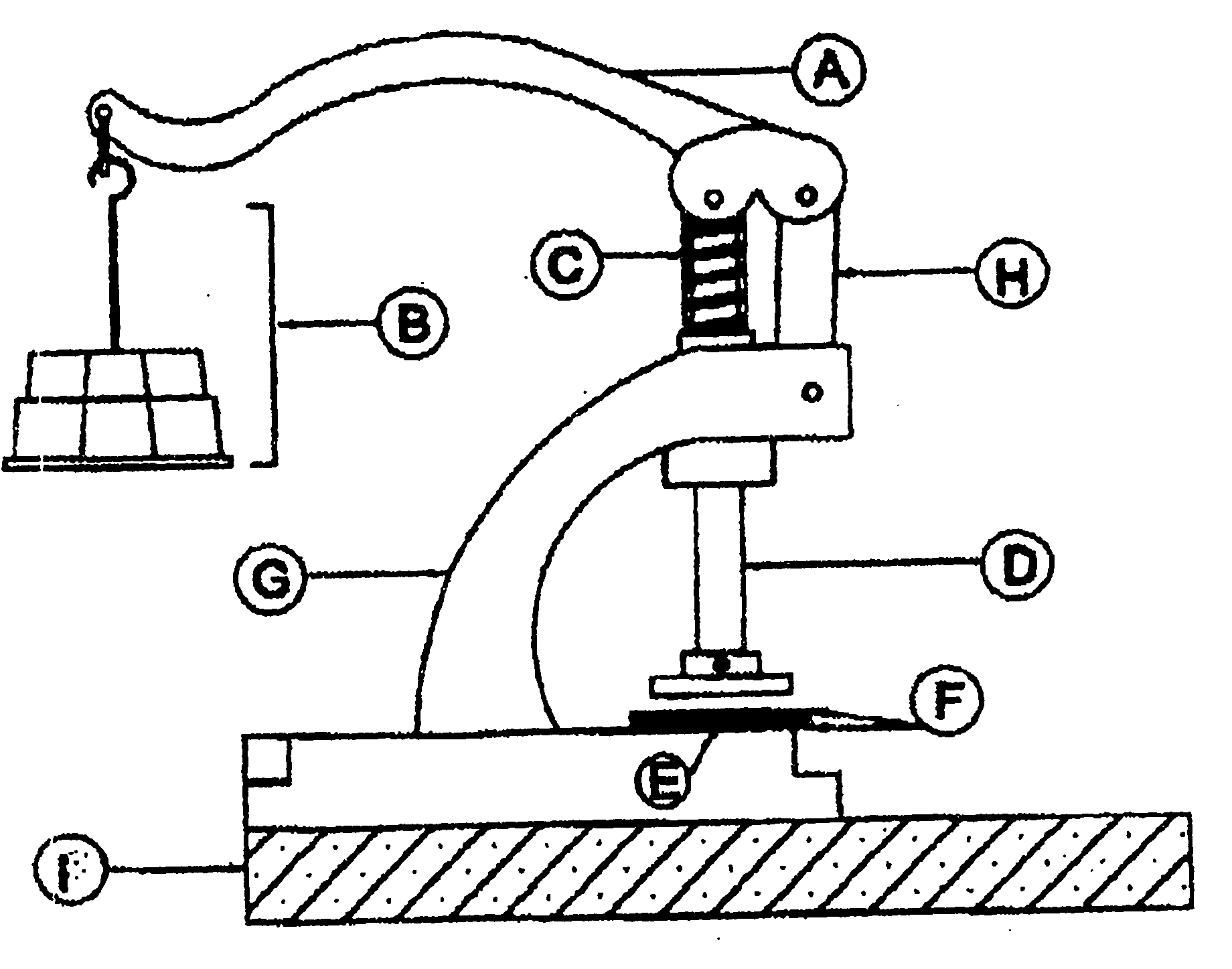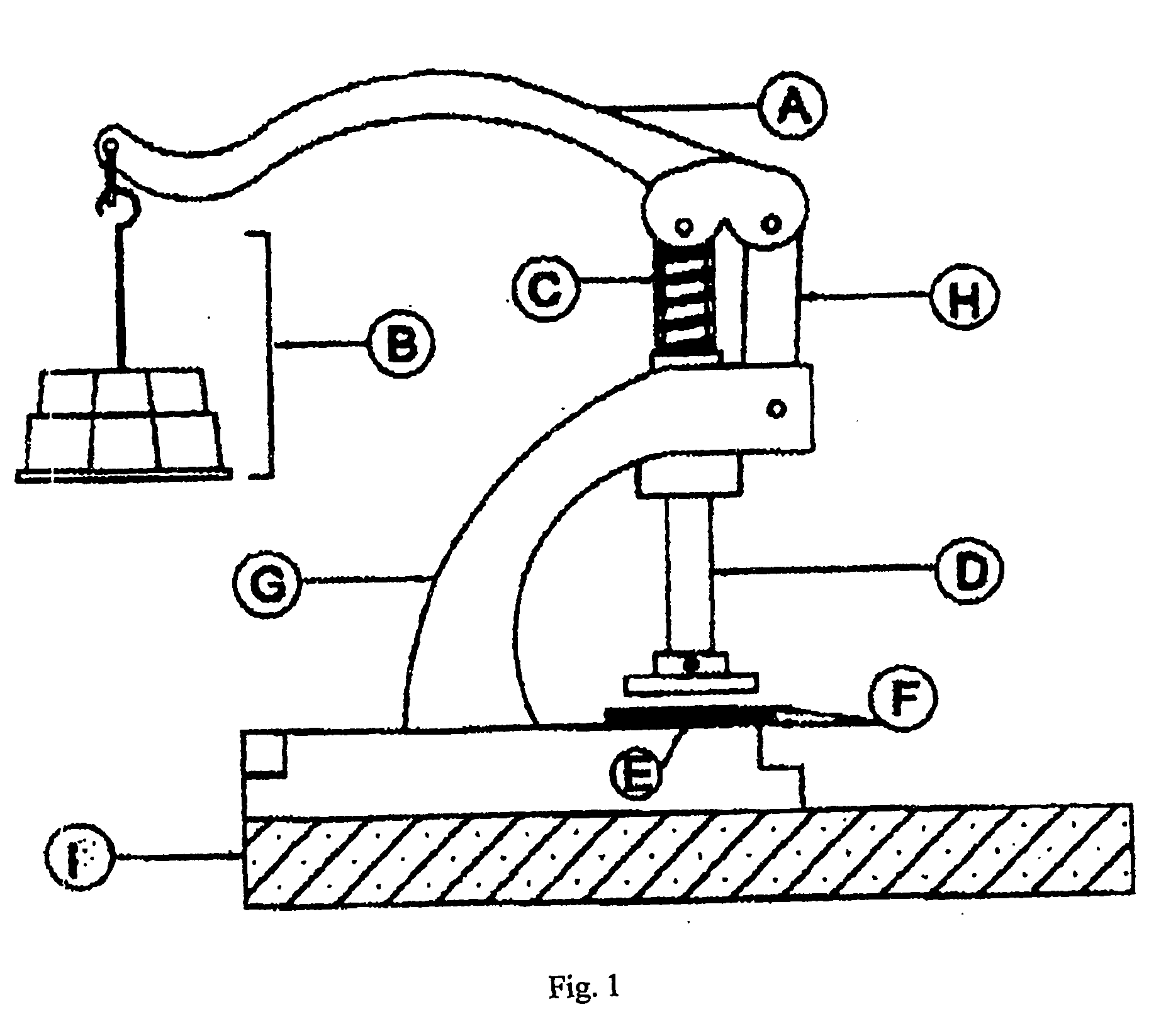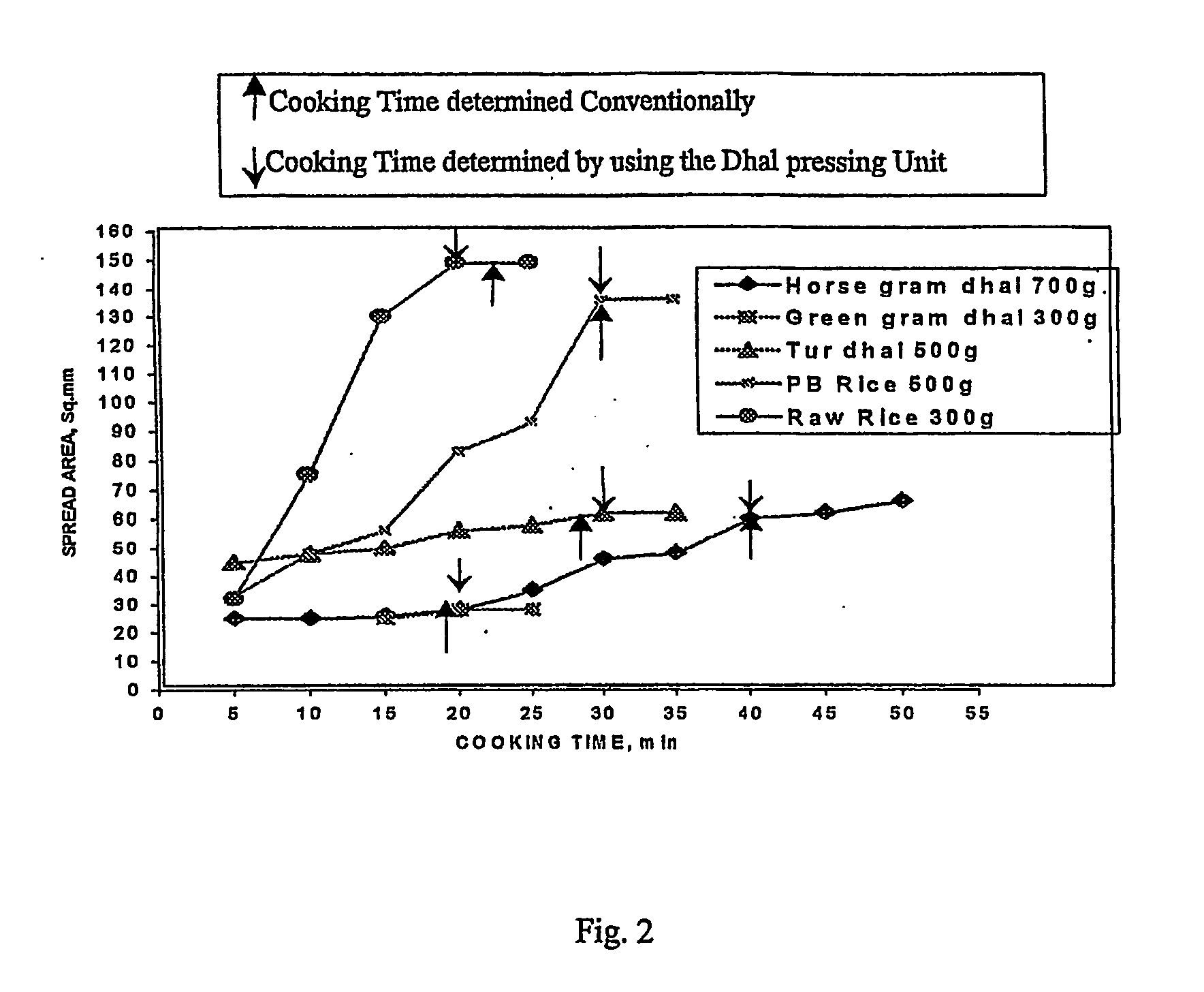Method and Device for Measuring the Texture of Cooked Grains
- Summary
- Abstract
- Description
- Claims
- Application Information
AI Technical Summary
Benefits of technology
Problems solved by technology
Method used
Image
Examples
example 1
[0052] Dehulled and cleaned tur dhal sample was taken for cookability study. 10 g of sample was put in excess boiling water (100 ml), samples were drawn at 5 min. interval and ‘spread area’ measurements were carried out using the pressing device using a selected weight of 500 g as already indicated. The spread area increased gradually from about 43 sq mm (initial-soaked sample) to 59 sq mm in 25 min. and then from 59 to 63 sq. mm in the next 10 min. Therefore, the test was repeated at two-minute interval from 25 min to 35 min and a plot of spread area vs cooking time was obtained. Cooking time was noted as the time at which the spread area reached a constant value of around 62 sq. mm. The subjective cooking time of tur dhal sample being cooked was around 28 min and corresponded very well to the point at which a constant trend was observed in the graph as shown in FIG. 2 indicating that this method could be used as an objective method for evaluating the cooking time of the tur dhal b...
example 2
[0053] 10 g of cleaned dehusked green gram dhal sample were tested for cookability using the above device as indicated earlier with a selected weight of 300 g. Cooked dhal samples were removed every 5 min. intervals and the spread area was measured as indicated in example 1. The area increased gradually to about 25 sq mm in 18 min and after which there was an increase in the spread area from 25 to 28 in next 2 min. The point at which a deflection occurred is taken as the cooking time, which showed a spread area of about 27-28 sq mm at 18-19 min and corresponded to its subjective cooking time of around 18 min (FIG. 2). The spread area measurements were confirmed by repeating the experiment.
example 3
[0054] 10 g of cleaned and dehulled horse gram dhal were tested for spread area measurements against cooking time using the above device with a selected weight of 700 g. The spread area increased gradually from 20 to 26 sq mm in 40 min and then this increased from 26 to 36 in next 10 min indicating the accomplishment of textural softness and doneness at around this time. Thus a spread area of 36 sq mm was obtained at 50 min cooking time, which corresponded to the sensory cooking time of horse gram dhal (FIG. 2 ). The test was repeated to confirm the results.
PUM
 Login to View More
Login to View More Abstract
Description
Claims
Application Information
 Login to View More
Login to View More - R&D
- Intellectual Property
- Life Sciences
- Materials
- Tech Scout
- Unparalleled Data Quality
- Higher Quality Content
- 60% Fewer Hallucinations
Browse by: Latest US Patents, China's latest patents, Technical Efficacy Thesaurus, Application Domain, Technology Topic, Popular Technical Reports.
© 2025 PatSnap. All rights reserved.Legal|Privacy policy|Modern Slavery Act Transparency Statement|Sitemap|About US| Contact US: help@patsnap.com



